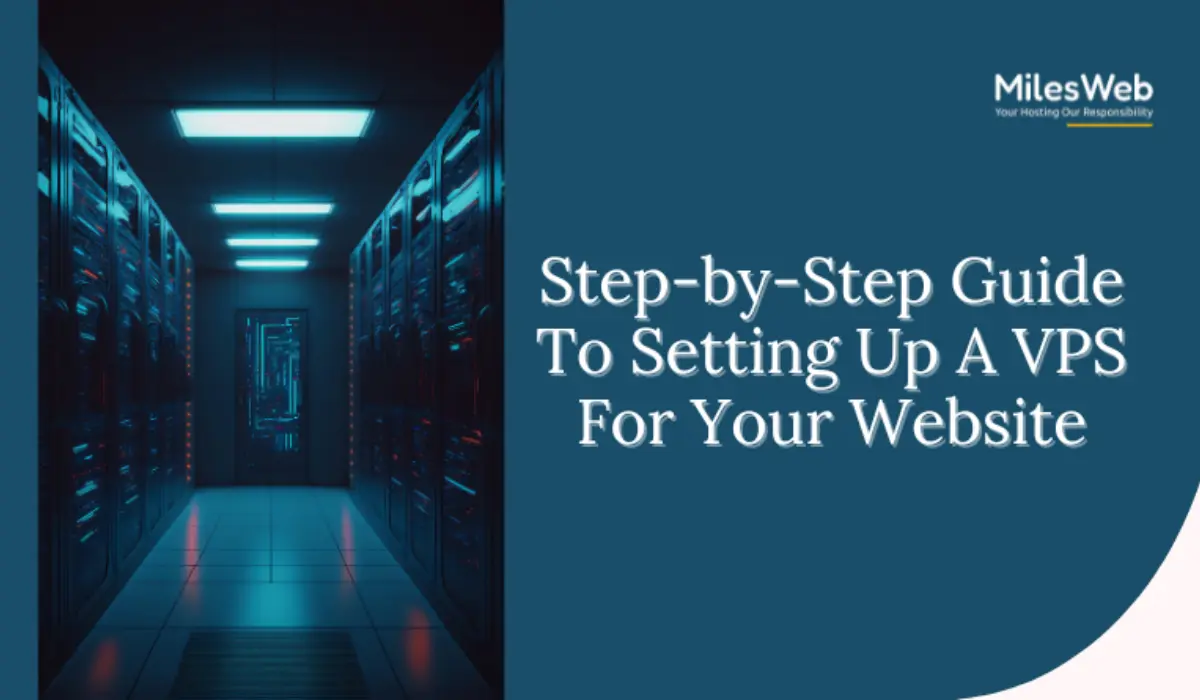Businesses rely on technology to meet their operational needs. They seek a reliable and efficient web hosting environment to accommodate their websites and applications cost-effectively. Here we talked about to set up VPS hosting for your website.
This is why different types of VPS servers are deployed to build the online presence. One variant is Rocky Linux VPS.
Setting and configuring the VPS will be a daunting task, especially if you are new to the server management world; even though a VPS setup helps achieve optimal speed, performance, and security for your website or app, As a small business owner, if you want the guidance to setup your own VPS, read this article. By its end, you will be convinced, and we assure you that you will choose a reliable VPS hosting or Ruby Rails web hosting plan.
How Do You Set Up VPS Hosting for Your Website?
Step 1: Choose a VPS Provider
The first step is to pick the right service provider. Search for a reputed web host who offers excellent support and a range of plans meeting requirements. We took the example of MilesWeb and Azure. Here is the comparison table of their VPS hosting plans.
| Features | MilesWeb | Azure |
| Fully managed VPS and self-managed options | ✅ | ❌ |
| Linux & Windows OS | ✅ | ✅ |
| Includes cPanel / WHM / Plesk | ✅ | ✅ |
| Full server stack support | ✅ | ✅ |
| Performance optimization | ✅ | ❌ |
| 24/7/365 support included | ✅ | ❌ |
| Uptime | 99.9% | 99.99% |
You can see that MilesWeb has more features available for website owners. Supportive features and compatibility give clients the comfort zone to build their online presence hassle-free.
Step 2: Create the Virtual Instance in VMs
Windows and Linux are the two main operating systems installed on VPS. Install either of them on your VPS and create a virtual instance. Here is an overview of the process.
- Log in to your host’s control panel to access your VPS.
- Select the virtualization technology to create the VM instance. Hypervisor-based virtualization (ex, VMware, Xen, or KVM) and container-based virtualization (Docker and LXC/LXD) are the most common options. Your VPS provider will provide you with options based on your specific requirements.
- Set up your VPS with the virtualization software of your choice. In this tutorial, we are going to be using VMware.
- Click the Create a New Virtual Machine button on the VMware workstation app on your desktop.
- Click on the Next button after selecting the Typical (recommended) configuration option.
- Click Browse, then select the Installer disc image file (iso).
- Select the disk image of the operating system from your computer, whether it’s Linux or Windows.
- Enter the name of the operating system and click Next. In this tutorial, we are selecting Linux as the guest OS and CentOS 7 (64-bit) as the version.
- Please assign a name to your virtual machine, choose its storage location, and then click Next. You can name it as per your preference.
- Set the disk space allocation for your virtual machine and choose whether to store the virtual disk as a single file or split it into multiple files.
- Review the VM configuration, and if everything looks correct, click Finish to proceed.
- Once the VM instance is created, power it on and install the operating system as you would on a physical computer.
Also Read
Step 3: Connect to the VPS using SSH
Secure Shell (SSH) is a cryptographic network protocol that allows you to securely connect to a remote machine or server over an insecure network. With this, all data transmitted within the network will be encrypted, so it is challenging to decipher the information.
Updating Your Package Manager:
For Debian-based systems (Ubuntu, Debian):
Run the following command to update the package list and upgrade installed packages:
sudo apt update && sudo apt upgrade -y
apt update refreshes the package index to fetch the latest available versions.
Apt upgrade installs updates for all installed packages.
For RHEL-based systems (CentOS, AlmaLinux, Rocky Linux):
Use the following command to update the system:
sudo yum update -y
Or for newer versions using dnf:
sudo dnf update -y
Additional Steps After Updating:
Remove Unnecessary Packages: Clean up outdated dependencies with:
sudo apt autoremove -y
or
sudo yum autoremove -y
Reboot the System (If Required):
After major updates, especially kernel updates, restart your VPS to apply changes:
sudo reboot
Enable Automatic Updates (Optional):
On Ubuntu/Debian, install and configure unattended upgrades:
sudo apt install unattended-upgrades -y
sudo dpkg-reconfigure unattended-upgrades
On CentOS/RHEL, enable automatic updates with:
sudo yum install -y dnf-automatic
sudo systemctl enable –now dnf-automatic.timer
Step 4: Secure Your VPS by Configuring a Firewall
An effective way to enhance the VPS security is by configuring a firewall. It acts as a virtual barrier, filtering and regulating network traffic based on predetermined rules. By selectively allowing or denying incoming and outgoing connections, a firewall effectively shields your VPS from different malicious activities.
Additionally, configuring a firewall helps prevent unauthorized access, mitigates DDoS attacks, and safeguards sensitive data from cyber threats. Tools like UFW (Uncomplicated Firewall) for Ubuntu/Debian or firewall/iptables for CentOS and RHEL-based systems to define rules restricting access to critical services. Regularly updating firewall policies and monitoring logs ensures ongoing protection, reducing the risk of security breaches and maintaining a secure VPS environment.
Step 5: Test Your VPS
Testing your VPS shows you if any issues could come up and allows you to gauge the overall performance to maximize your VPS capabilities fully. By actively testing and running these checks, you are proactively mitigating risks for your applications/services to live and work in a stable and secure environment.
For example, running tools such as top or top to see CPU % or memory (%) in use, ping to test latency to various endpoints, and which endpoints are down, if any, and whether they are as expected. Then, moving on to ensuring your VPS security, running a vulnerability test with tools like Fail2Ban or ClamAV is a great next testing phase. Regularly testing and maintaining both boosts efficiency and limits downtime for your users/applications’ services.
Also Read
Summing Up
Configuring a VPS for your site is similar to building the foundation of a robust and scalable web presence. With proper configurations, security settings, and optimizations, your VPS can provide lightning-fast performance, improved security, and full control over your hosting setup. Whether you have a business site, an online store, or a personal blog, a properly configured VPS provides reliability and flexibility to scale with your requirements. Now that your VPS is installed and operational, the true adventure starts—keep it updated, watch its performance, and experiment with advanced configurations to get the most out of it. With the strength of a VPS at your command, your site is ready to flourish in the online arena!







